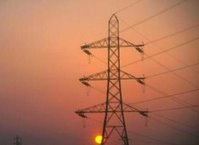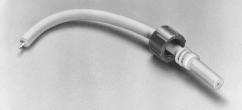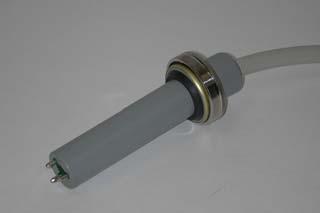Detect Flaws in Coatings
The presence of flaws in coatings, sometimes referred to as porosity
or holidays, can be detected with a DC high voltage spark tester.
This technique is good for finding flaws such as pinholes or very
thin sections in non-conductive coatings that have been applied to a
conductive substrate. The ground wire from the tester is first
connected to the substrate, and then the voltage is set so that if
there is a flaw, the voltage from the tip of the high voltage probe
will cause an arc, or current flow to occur. The high voltage probe
is moved along the coating surface to look for defects.
Depending on the type of coating and thickness, the voltage setting
can range between 500V and 30kV for most cases. Of course, proper
safety precautions must be followed.




